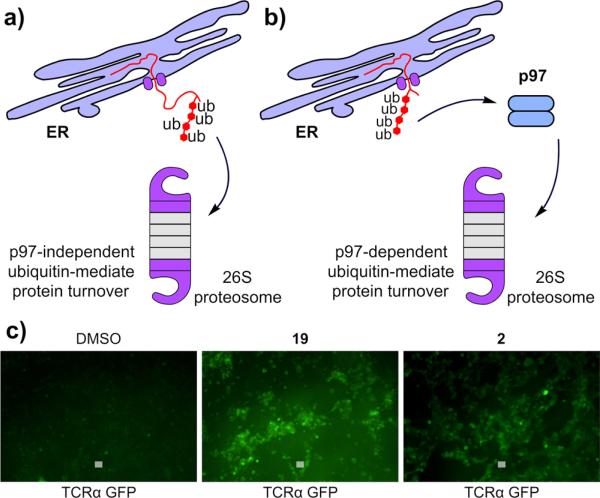Figure 4.
Differentiation of p97-dependent and p97-independent endoplasmic reticulum associated degradation (ERAD) pathways. (a) Poly-ubiquitylated CD3δ exposes a large portion of its sequence to the cytosol and can be extracted from the ER in a p97-independent manner. (b) Poly-ubiquitylated TCRα exposes only a small amount of sequence to the cytosol and requires the force of p97 to extract from the ER membrane. (c) TCRα–GFP can be visualized by fluorescence microscopy. No fluorescence obtains in the absence of a p97 inhibitor, but in the presence of a p97 inhibitor, 1 μM 19 or 1 μM 2, the protein is protected, leading to fluorescent cells. Bar denotes 10 μm.

